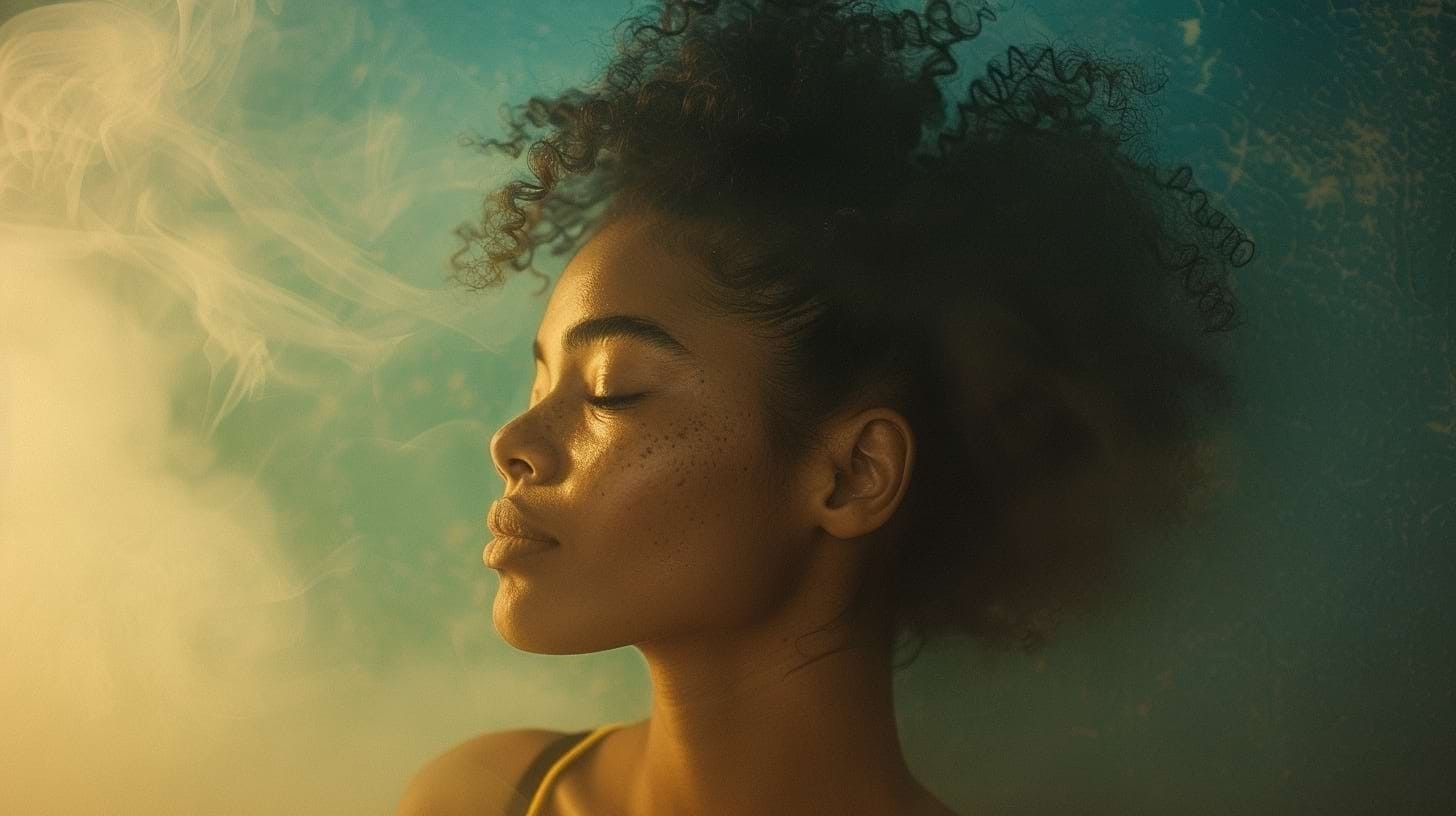How Embracing Diversity and Representation is Transforming Filmmaking
Diversity and representation now have a powerful impact on the industry and audience engagement. Delving deeper into this transformative trip, we explore how embracing diversity in film has enriched storytelling and challenged long-held industry norms by sharing a more vibrant cinematic experience.


The world is a tapestry woven from countless cultures, ethnicities, and perspectives. Shouldn't films reflect that beautiful diversity?
By including voices from various backgrounds, films can offer fresh perspectives and authentic narratives that resonate with a broader audience. This inclusivity reflects our multicultural society and promotes understanding.
Diverse representation behind and in front of the camera leads to more nuanced characters and storylines, avoiding one-dimensional portrayals. It allows underrepresented groups to see themselves portrayed meaningfully, fostering a sense of belonging and validation. For most audiences, exposure to diverse stories expands worldviews and cultivates empathy.
Financially, inclusive films often reach wider markets, tapping into underserved audiences eager for authentic representation.
Ultimately, a more diverse film industry creates a richer cultural overview, benefiting both creators and viewers by presenting a more accurate and comprehensive portrayal of the mosaic of existence.
Foster Inclusive Storytelling!
Filmustage helps streamline script breakdowns, budgeting, and scheduling, making it easier to bring authentic, inclusive narratives to life.
Historical Context and Progress in Film Diversity 🕰️
The film industry's way towards diversity and inclusivity has been a long and often challenging one. For much of cinema's history, representation both on and off-screen was predominantly limited to a narrow demographic.
In Hollywood's early days, actors of color were frequently relegated to supporting roles or caricatures, while women were often confined to limited, one-dimensional parts. Behind the camera, directorial and production roles were overwhelmingly dominated by white men, leading to a homogeneous perspective in storytelling.
However, the latter half of the 20th century saw the beginnings of change. The civil rights movement of the 1960s influenced some filmmakers to address racial issues more directly. Pioneering directors like Spike Lee and John Singleton emerged in the 1980s and 90s, bringing authentic black experiences to mainstream cinema.

The 21st century has witnessed accelerated progress. Milestones include:
1. Increased representation in major awards: In 2002, Halle Berry became the first black woman to win the Academy Award for Best Actress.
2. Women in directing: Kathryn Bigelow became the first woman to win the Oscar for Best Director in 2010, with Chloé Zhao following in 2021. (Read more about women behind the camera here).
3. LGBTQ+ stories in mainstream cinema: Films like "Moonlight" (2016) have brought queer narratives to wide audiences.
4. Greater diversity in superhero films: "Black Panther" (2018) showcased a predominantly black cast and crew, achieving commercial success.
5. Asian representation: "Crazy Rich Asians" (2018) became the first major Hollywood studio film (since "The Joy Luck Club" in 1993) with an all-Asian cast in 25 years.

The importance of diversity in film cannot be overstated. By embracing cultural representation, the movie industry opens doors to fresh narratives and innovative storytelling techniques.
In recent years, studios and industry organizations have been making more concerted efforts to promote inclusivity.
While progress has been made, challenges remain. Representation in executive positions, equal pay, and authentic storytelling continue to be areas requiring improvement. The ongoing dialogue and push for greater diversity promise a more inclusive future for cinema, enriching the art form and its impact on society.
The Impact of Inclusive Storytelling: Representation Matters
Why is diverse storytelling so important?
Authentic representation allows audiences to see themselves reflected on screen, fostering a sense of connection and validation. This is the power of inclusive cinema – it allows us to broaden our worldview.
When individuals see themselves reflected in media, it validates their experiences and aspirations. For marginalized groups, positive portrayals can counter negative societal perceptions and inspire future generations.
Such animations like "Coco" (Mexican culture), "Moana" (Polynesian culture), and films like "Slumdog Millionaire" (Indian characters), "Wonder Woman" (Strong woman), "Bohemian Rhapsody", "Rocketman", "Brokeback Mountain" (LGBT+) demonstrate that when diverse stories are told with authenticity, they can achieve both critical acclaim and commercial success. They prove that audiences hunger for fresh perspectives and are willing to engage with narratives outside their immediate experience.
Inclusive storytelling has the power to shape societal attitudes. By presenting diverse characters in multifaceted roles, cinema can challenge prejudices and foster greater understanding between different communities.
Challenges and Barriers in Diversity and Representation: Overcoming Industry Inertia
Despite growing awareness and efforts, the way towards true equity in filmmaking remains fraught with obstacles. Challenges in diversity persist at every level of the industry, from script development to distribution.
Systemic Bias 🚧
Deeply ingrained prejudices often influence decision-making processes, leading to a perpetuation of homogeneous narratives and casting choices. This bias can manifest in subtle ways, such as assumptions about which stories will resonate with audiences or which actors will draw crowds.
Lack of Opportunity 🔍
Aspiring filmmakers from diverse backgrounds often face limited access to education, mentorship, and networking opportunities crucial for breaking into the industry. This creates a cycle where the same voices dominate, leaving little room for fresh perspectives.
Industry Resistance to Change 🏛️
Established power structures and financial models can adapt slowly, prioritizing "safe" choices over innovative, diverse content. This risk-averse approach often results in the recycling of familiar narratives and faces, stifling creativity and representation.

Gender Diversity 👭
Despite some high-profile successes, women continue to be underrepresented in key roles such as directing, cinematography, and executive positions. This imbalance not only limits the variety of stories told but also perpetuates gender stereotypes both on and off-screen.
LGBTQ+ Inclusivity 🏳️🌈
While representation has improved in recent years, many portrayals still lack depth or fall into stereotypical tropes. Additionally, the industry often grapples with the fear of backlash or financial repercussions in certain markets, leading to self-censorship or the watering down of LGBTQ+ narratives.
✨ Overcoming these obstacles is the question of fairness and enriching the art form itself. By dismantling barriers to diversity, the film industry can tap into a wealth of untold stories and perspectives, ultimately creating more compelling and resonant cinema for audiences worldwide.
Initiatives and Solutions for a More Inclusive Film Industry 🌱
Numerous initiatives have emerged to address these challenges and promote diversity in filmmaking:
🎬 Diversity-focused Programs:
- Sundance Institute's Diversity Initiative
- NBCUniversal's Global Talent Development & Inclusion programs
- Academy Gold Program for underrepresented communities in film.
Film festivals like Outfest, the American Black Film Festival, Sundance, and Toronto provide platforms for diverse voices.
Grants specifically dedicated to supporting filmmakers such as the Tribeca Film Institute's All Access program from underrepresented communities are making a difference.
Diversity training programs are educating industry professionals about unconscious bias and inclusive storytelling practices.
Filmmakers' Role and Studio Responsibility in Representation of Diverse Voices
Filmmakers and studios play a significant role in shaping societal perceptions and cultural narratives through the stories they tell on screen. As such, they bear a significant responsibility in promoting diversity and inclusion within the film industry and society at large. This responsibility extends beyond tokenism to encompass authentic representation and the amplification of diverse voices throughout the filmmaking process.
The Filmmakers' Role 🎬
The filmmakers' role in fostering diversity begins at the conceptual stage of a project. By actively seeking out and developing stories that reflect a wide range of experiences and perspectives, directors and screenwriters can contribute to a more inclusive cinematic landscape. This involves featuring characters from diverse backgrounds and exploring themes and narratives that resonate with underrepresented communities.
Studio Responsibility 🏢
As the financial backers and distributors of films, studios have the power to greenlight projects that promote diversity and to allocate resources to filmmakers from varied backgrounds. By making a conscious effort to diversify their slate of productions, studios can significantly impact the types of stories that reach audiences worldwide.
Diverse Casting 👥
Filmmakers and casting directors must look beyond traditional choices and actively seek out talent from all backgrounds. This not only provides opportunities for underrepresented actors but also allows for more authentic portrayals of diverse characters. Studios can support this by implementing inclusive casting policies and challenging outdated notions of what leading roles should look like.
Diversity Behind the Camera 📽️
Filmmaking with diverse voices extends beyond what's seen on screen. This includes directors, producers, writers, cinematographers, and other key creative roles. When diverse individuals are involved in the decision-making process, it naturally leads to more nuanced and authentic storytelling.
Films Caused Resonance and Discussion
The cinematography has been significantly shaped by films that have pushed the boundaries of inclusivity and diversity, often sparking intense societal debates. These groundbreaking works have left indelible marks on the industry and culture at large, challenging preconceptions and paving the way for more diverse representations on screen.
"Tangerine" (2015)
One of the most intriguing examples is "Tangerine" (2015), directed by Sean Baker. This micro-budget film, shot entirely on iPhones, follows two transgender sex workers through the streets of Los Angeles on Christmas Eve. What makes "Tangerine" particularly notable is not just its subject matter, but also its casting of actual transgender actresses in the lead roles. This decision brought authenticity to the performances and sparked discussions about trans representation in media, challenging the industry's frequent practice of casting cisgender actors in transgender roles.
"A Fantastic Woman" (2017)
A Chilean drama directed by Sebastián Lelio stands out for its sensitive portrayal of a transgender woman dealing with loss and discrimination. The film's lead actress, Daniela Vega, became the first openly transgender person to present at the Academy Awards. This film sparked debates about transgender rights in Chile and contributed to the passage of a gender identity law in the country.
"Get Out" (2017)
Jordan Peele's directorial debut, blended horror and social commentary to create a uniquely unsettling exploration of racism in America. The film's premise - a young black man visiting his white girlfriend's family - takes a sinister turn that serves as a metaphor for the commodification and exploitation of black bodies. "Get Out" revitalized the horror genre and prompted intense debates about subtle forms of racism and the concept of the "post-racial" society.
"The Rider" (2017)
"The Rider" (2017), directed by Chloé Zhao, offers a unique perspective on Native American life, blurring the lines between fiction and documentary. Casting non-professional actors to play versions of themselves, Zhao created a deeply authentic portrayal of life on the Pine Ridge Reservation. The film challenged stereotypical depictions of Native Americans in cinema and sparked conversations about representation and the value of insider perspectives in storytelling.
By sparking societal debates, these films have demonstrated the power of cinema to influence perceptions, challenge norms, and ultimately contribute to social change.
It's not Just a Trend 🔄
Embracing diversity and representation is the future of filmmaking. By fostering inclusivity, we create a richer tapestry of stories, engage wider audiences, and ensure that cinema continues to reflect the beautiful complexities of our world.
Filmustage, an AI tool for filmmakers, can be your partner in this transformation. Filmustage's script breakdown features can help identify opportunities for diverse casting and inclusive storytelling, ensuring your films resonate with a global audience.
From Breakdown to Budget in Clicks
Save time, cut costs, and let Filmustage’s AI handle the heavy lifting — all in a single day.